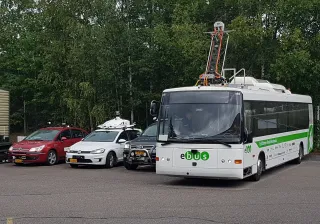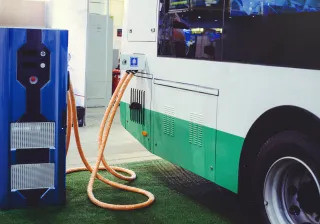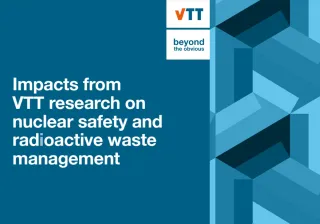CMM has gone about improving Santiago de Chile’s poor air quality by helping plan the electrification of the city’s bus fleet. To make the electrification feasible in Santiago’s demanding conditions, CMM used the VTT Smart eFleet toolbox. The project has paved the way for a large-scale bus fleet renewal in Santiago.
Key facts
Reduced emissions and pollution
Improved ROI in fleet electrification
Standard for future fleet electrification
Centro Mario Molina, CMM in short, is an independent research and development center for strategic studies on energy and the environment. CMM promotes sustainable development by solving challenges related to climate change and the use of energy, primarily in the transportation sector.
CMM is currently assisting in the electrification of the public transport fleet of Santiago, the capital of Chile. Out of the 6,700 buses in Santiago, over 400 are already electric, making the city’s electric bus fleet the biggest of any city outside China.
The goal is to use electric power in all of the buses in Santiago by 2035. In late 2017, VTT and CMM started analysing which of Santiago’s 380 bus routes should be electrified first and how the process could be scaled in the future.
Difficult road conditions require special measures
Santiago is a large city of over seven million people. With an increasing amount of traffic, air quality is deteriorating fast.
The mountains surrounding the city add to the pollution problems. The electrification of public transport was identified as a possible solution to the air quality problem, but there were some challenges that had to be addressed first.
The conditions in Santiago are demanding:
- road network conditions are varied
- limited dedicated bus lanes or infrastructure
- steep hills in the mountainous terrain.
Besides the conditions, the bus utilisation rates are high. In the peak hours, the buses carry more than 80 people, which puts the vehicles under immense strain.
Considering the challenges, accurate predictions of the costs and benefits of fleet electrification were difficult to produce. Also, the lack of reliable data made it hard to choose the routes to electrify and the vehicle types to buy.
Creating a Santiago-specific drive cycle through simulations
To analyse the routes and the vehicle capabilities, CMM turned to VTT. The VTT Smart eFleet toolbox enabled CMM to include geographical operation environments, vehicle properties and the effect of the infrastructure in their analysis.
Drive cycles are a method for measuring vehicle performance in various ways. Using the VTT Smart eFleet toolbox, VTT and CMM created a Santiago-specific drive cycle. The drive cycle includes factors such as:
- how the properties of different bus and battery types affect reliability and efficiency
- the effect of weather conditions and geography on the operation
- which routes to electrify for maximum cost-efficiency
- energy consumption and placement of charging stations
- emissions reductions.
The project yields both local and governmental results
The fleet electrification project expedites Chile’s, and Santiago’s, emissions and air quality goals.
With the VTT Smart eFleet toolbox, CMM is able to provide accurate information about the feasibility of the electrification of a certain route and how to scale the fleet electrification. Santiago now gets a better return on their investment.
VTT’s holistic approach also provided CMM with a wider perspective on the requirements of buying electric buses. For example, CMM can now provide better information on the infrastructure needed to operate the fleet. Encouraged by the well-planned electrification project in Santiago, the Chilean government are about purchase up to 2,000 electric buses in the near future.
The drive cycle created in the project now sets the standard for all bus acquisitions in Santiago. The Chilean government even passed a law requiring every bus manufacturer to provide vehicle data based on the drive cycle, if they want to participate in Santiago’s public tenders . The law is the first of its kind in Latin America. As a result, Santiago’s public transport authorities get relevant information on the vehicles they consider purchasing.
The project has also brought together and created trust between regional, governmental and international parties. The project has optimised the processes of the regional authorities in Santiago and the Chilean Ministry of Transport and Telecommunications. The Finnish embassy in Chile and the Chilean embassy in Finland have also been actively involved.
Further business opportunities
The bus fleet electrification project has created business opportunities for both VTT and CMM.
CMM is starting new fleet electrification projects in Cali, Colombia, and other areas across Latin America. CMM and VTT are also promoting electric mobility in emerging economies, such as Ecuador and Uruguay through the EU-funded SOLUTIONSplus project.
The VTT Smart eFleet toolbox has shown potential in other sectors too. Chile is a global player in mining and has to meet many environmental standards. The toolbox could support the electrification of mining equipment, vehicles and transport buses. Electrification would help Chile reduce emissions while minimising the effect of fluctuating oil prices.
Our partnership with VTT has been extremely fruitful. VTT has globally recognized technical capacity and thought leadership, while CMM is able to provide regional expertise on the operational and regulatory conditions of Latin America.









